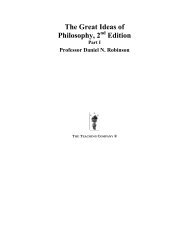Critical reflection in a TESL course: mapping conceptual change
Critical reflection in a TESL course: mapping conceptual change
Critical reflection in a TESL course: mapping conceptual change
You also want an ePaper? Increase the reach of your titles
YUMPU automatically turns print PDFs into web optimized ePapers that Google loves.
Culture was the next concept (present <strong>in</strong> four maps) and <strong>in</strong>cluded issues<br />
such as culture difference, ethnicity effect on learn<strong>in</strong>g and teach<strong>in</strong>g styles,<br />
and culture shock. The group discussion that followed <strong>in</strong>dicated that the<br />
participants were draw<strong>in</strong>g on not only their prior experiences as students <strong>in</strong><br />
the school system but also their own language learn<strong>in</strong>g experiences (stated<br />
by two of the seven) and from their experiences as students <strong>in</strong> their <strong>in</strong>itial<br />
language <strong>TESL</strong> teacher certificate <strong>course</strong>s (stated by five of the seven<br />
participants); <strong>in</strong> fact, many of the results of the <strong>in</strong>itial map may be attributed<br />
to some of the participants’ experiences <strong>in</strong> previous certificate <strong>course</strong>s as<br />
many of the concepts seem to represent the subject matter of these <strong>course</strong>s.<br />
Thus, the pre-<strong>course</strong> group concept map gave the <strong>in</strong>structor some<br />
<strong>in</strong>dication of these participants’ prior beliefs about, and experiences with,<br />
<strong>TESL</strong>.<br />
Post-<strong>course</strong> group<br />
concept map<br />
The post-<strong>course</strong> group concept map is shown <strong>in</strong> Figure 2. Several new<br />
concepts appeared <strong>in</strong> the post-<strong>course</strong> concept maps that were not on the pre<strong>course</strong><br />
maps such as <strong>Critical</strong> <strong>reflection</strong>/Self-awareness (23), Research and<br />
theory (9), and Curriculum design (8). In addition, it should be noted that<br />
some concepts appeared <strong>in</strong> more than one sphere, <strong>in</strong>dicat<strong>in</strong>g possibly that<br />
the participants were attempt<strong>in</strong>g to make connections between the<br />
concepts.<br />
<strong>Critical</strong> <strong>reflection</strong> was the most popular concept <strong>in</strong> the post-<strong>course</strong> group<br />
concept map and was subdivided <strong>in</strong>to teachers’ personality, self confidence,<br />
self-awareness, self-assessment, knowledge of subject matter, classroom<br />
lessons, and evaluation. Next came research and theory, further subdivided<br />
<strong>in</strong>to theory acquisition, applied l<strong>in</strong>guistics—especially how, research theory<br />
and practice are l<strong>in</strong>ked—can anyth<strong>in</strong>g be proven, corrective feedback, and<br />
alternative assessment of students. This concept was followed by another<br />
new concept curriculum design with subdivisions of textbooks, ideology,<br />
and materials.<br />
All participants wrote that they had noticed a major new concept of critical<br />
<strong>reflection</strong> <strong>in</strong> the post-<strong>course</strong> maps. In addition, critical <strong>reflection</strong> enabled<br />
them to note that the post-<strong>course</strong> maps showed a different understand<strong>in</strong>g of<br />
the concept ‘method’ that allowed for a move away from a focus on look<strong>in</strong>g<br />
for the correct method when construct<strong>in</strong>g the pre-<strong>course</strong> concept maps.<br />
These two f<strong>in</strong>d<strong>in</strong>gs are important because both concepts were new and<br />
different from what the participants had said they ‘believed’ to be true for<br />
<strong>TESL</strong> before they had taken the <strong>course</strong>.<br />
Regard<strong>in</strong>g critical <strong>reflection</strong>, T3, a participant from Ch<strong>in</strong>a, said that she<br />
noticed <strong>in</strong> her post-<strong>course</strong> map that she had ‘a new bubble called critical<br />
th<strong>in</strong>k<strong>in</strong>g’ which she expla<strong>in</strong>ed <strong>in</strong> the post-<strong>course</strong> <strong>in</strong>terview as follows:<br />
You need your own th<strong>in</strong>k<strong>in</strong>g, not follow others ...like teach<strong>in</strong>g is their<br />
own voice <strong>in</strong> their teach<strong>in</strong>g process. Not just follows the adm<strong>in</strong>istrators<br />
th<strong>in</strong>k<strong>in</strong>g. I th<strong>in</strong>k I need to raise my voice; to express my op<strong>in</strong>ion of what<br />
teach<strong>in</strong>g is and how I should teach <strong>in</strong> my class <strong>in</strong>clud<strong>in</strong>g the k<strong>in</strong>d of<br />
material to use <strong>in</strong> my class, not just the textbook.<br />
Later <strong>in</strong> the same <strong>in</strong>terview she said that she would try to <strong>in</strong>stil this k<strong>in</strong>d of<br />
critical th<strong>in</strong>k<strong>in</strong>g <strong>in</strong> her students when she returned to Ch<strong>in</strong>a; she said:<br />
<strong>Critical</strong> <strong>reflection</strong> <strong>in</strong> a <strong>TESL</strong> <strong>course</strong> 225














